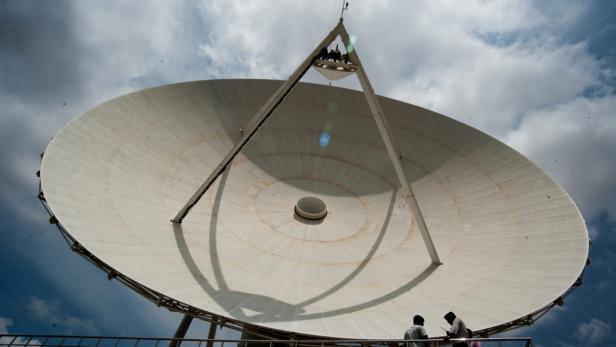
Verfassungsschutz dementiert NSA-Horchposten in Wien
Dieser Artikel ist älter als ein Jahr!
Im Westen von Wien soll sich in einer dreigeschossigen Villa ein Horchposten des US-Geheimdienstes NSA befinden, wie das Magazin Format berichtete. Das Objekt befinde sich in einem westlichen Außenbezirk, werde streng bewacht und sei im Grundbuch als Eigentum der Vereinigten Staaten von Amerika eingetragen. An dem Haus und einer Gartenhütte sollen sich Antennen bzw. Parabolantennen befinden.
"Ausfahrbare Betonhindernisse"
Fotos des Objekts samt Wachpersonal und „ausfahrbaren Betonhindernissen“ bildete das Magazin nicht ab - „aus rechtlichen Gründen“. Dafür war eine Zeichnung einer Villa zu sehen, in deren zwei Kellergeschossen eine „erste Selektion“ der abgeschöpften Daten vorgenommen werde. „Herzstück“ der Anlage soll ein direkter Anschluss an eines der leistungsfähigsten Glasfaserkabel Österreichs sein.
Angeblich soll in dem Objekt rund 70 Prozent des Telekommunikationsverkehrs der Bundeshauptstadt inklusive aller hier ansässigen internationalen Organisationen erfasst werden können. Die in Wien getroffene Vorauswahl an Daten werde dann an größere NSA-Rechenzentren in Süddeutschland weitergeleitet, hieß es. Ergänzt werde die Anlage durch klassische Antennen, die für den Zivilgebrauch unzulässige Frequenzen erfassen können.
Behörden lehnen "Vorwürfe" ab
Anfragen des Magazins bei den zuständigen Stellen des Innenministeriums und im Ministerbüro hätten immer dasselbe Ergebnis gebracht: Das Wissen um die Existenz eines NSA-Horchpostens in Wien wird in Abrede gestellt.
Der Direktor des Bundesamts für Verfassungsschutz und Terrorismusbekämpfung (BVT), Peter Gridling, dementiert „sämtliche“ in einem Bericht des Magazins „Format“ geäußerten „Vorwürfe“, wonach sich in einer Villa im Westen Wiens ein Horchposten des US-Geheimdienstes NSA befinden soll. Das teilte der Sprecher des Innenministeriums, Karl-Heinz Grundböck, der APA mit.
„Das BVT hat und hatte zu keinem Zeitpunkt Kenntnis“ von derartigen Aktivitäten des NSA, betonte Grundböck. Der BVT-Direktor behalte sich rechtliche Schritte gegen den angeblichen, „sogenannten Informanten“ des Magazins vor.
Kommentare